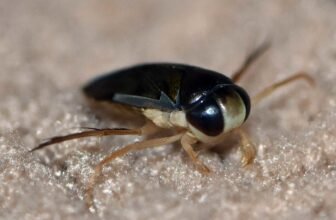
Three insanely cool things about frogfish: They are, like, experts at being disguised. Some of the most curious creatures of the ocean are benthic fish, also known as anglerfish. These fish have fascinated marine biologists and nature lovers because of their amazing camouflage skills and unique ways of hunting.
In this blog post, we will take a closer look at Benthic fish, including what they look like, their behavior, where they live, and their role in marine ecosystems.
Table of Contents
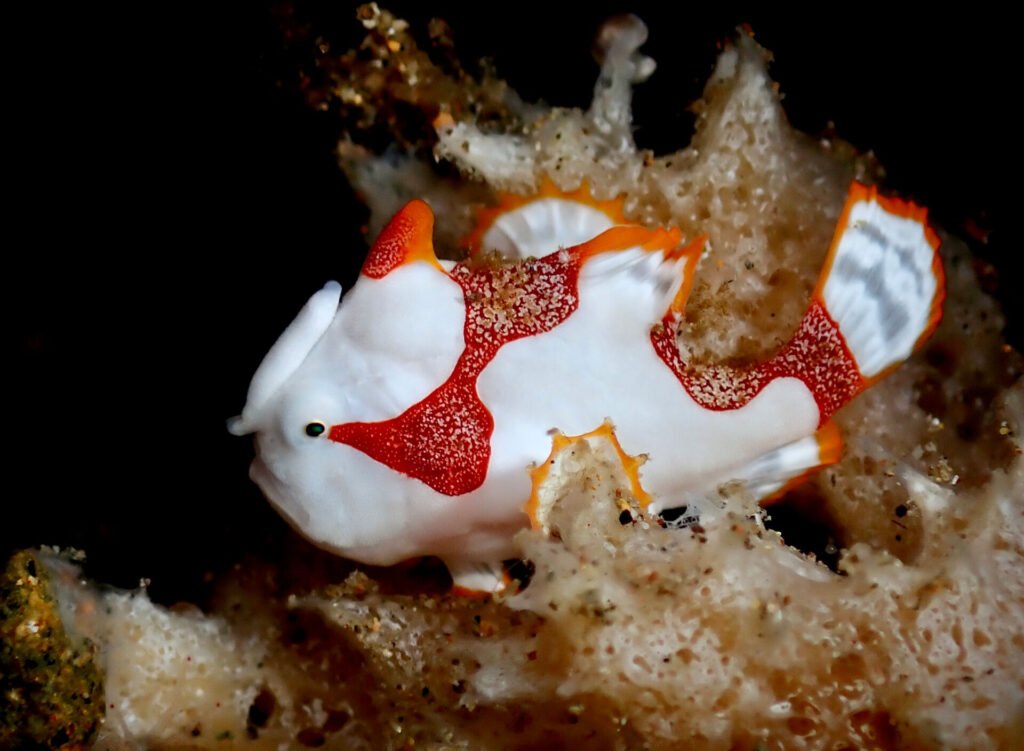
What Are Frogfish?
- Benthic fish are anglerfish belonging to the family Antennariidae. These fish are known for their bizarre and unique adaptations, making them one of the most specialized fish anywhere on Earth.
- These fish are mainly present in tropical and subtropical waters, dwelling along the sea floor in coral reefs, muddy bottoms, or sometimes even deeper in waters.
- The name “Benthic fish” is derived from their froglike features, particularly their squat bodies and large pectoral fins, which resemble a frog’s legs.
- They have a wide, flattened head with a large mouth and come in many colors and textures that can resemble sponges, corals, or rocks.
- Such adaptation allows them to camouflage and blend in the background and thus become difficult to be caught by their predators or prey.

Physical Characteristics
- Most Benthic fish measure around 2 to 10 inches (5 to 25 cm) long, with a few species able to reach greater sizes.
- Their most unusual characteristic is their illicium, an adapted dorsal fin spine that serves as a fishing lure.
- This lure protrudes from their head, with a small, luminescent organ called the esca at the end of it.
- Benthic fish inch close to the prey, wiggling the lure to entice small fish or invertebrates, and then can strike at lightning speed.
- Their bodies are also draped in textured skin that can change, so they look like sponges, algae, or coral.
- By blending in like this, it helps them to escape predators and ambush their prey.
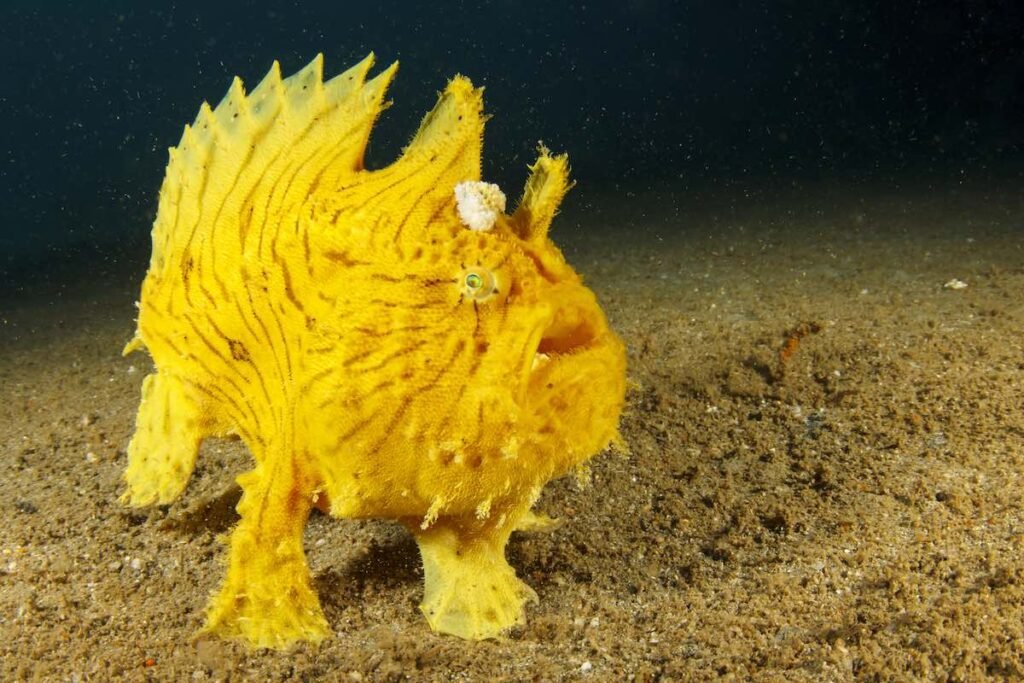
Behavior and Hunting Methods
- Perhaps one of the most striking characteristics of Benthic fish is their ambush method of hunting.
- These fish are not active hunters but rather sit quietly and wait for their prey to swim within reaching distance.
- They use their anglerfish lure to attract fish, shrimp, and other small marine life either by evoking the motion of a small creature or simply using the glowing lure to give the illusion of motion.
- When the prey is within range, the frogfish opens its mouth extremely fast, creating a vacuum that pulls prey inside.
- This feeding mechanism is so fast, in fact, that frogfish can strike in a matter of milliseconds.
- They can even open their mouths wider than their bodies to catch bigger prey.
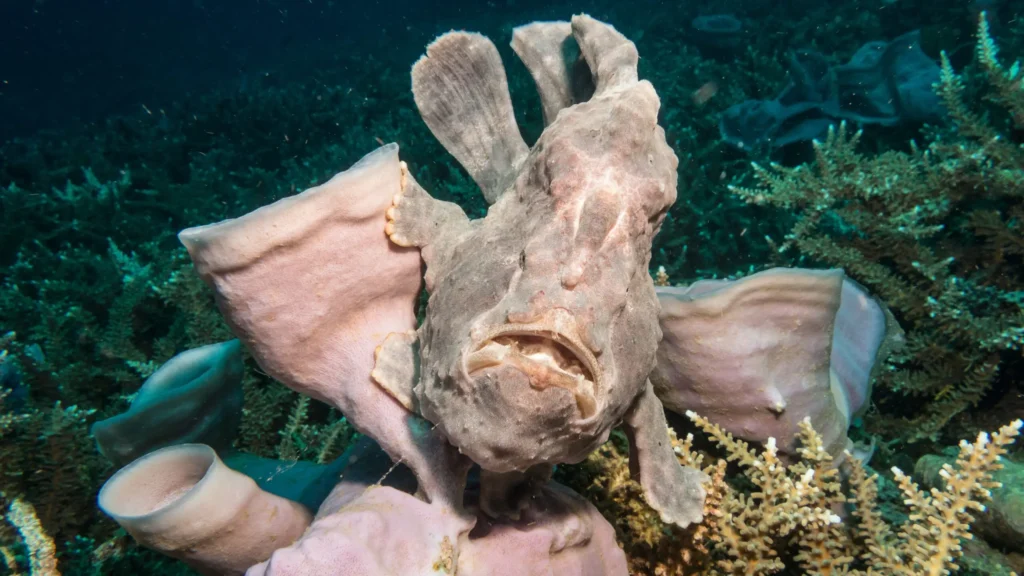
Frogfish Species
- Over 50 species of frogfish exist, each with their own characteristics and adaptations. Here are a few known examples:
- ANTENNARIUS_commerson (Common Frogfish) Coloriser et textureur se camouffle dans les univers différents.
- Antennarius maculatus (Spotty Frogfish): Notable for the festoon of bright spots and unique morphology.
- One such fish, the rhinopias eschmeyeri (commonly known as the Weedy Frogfish), has an intricate design that enables it to camouflage with its surroundings.
- Clown Frogfish: It is named for its bold orange and white color patterns that remind one of the patterns on the skin of a clownfish.
- Each of these species has evolved different strategies for living in its particular habitat, from changing the color of their skin to changing the shape of their lure.
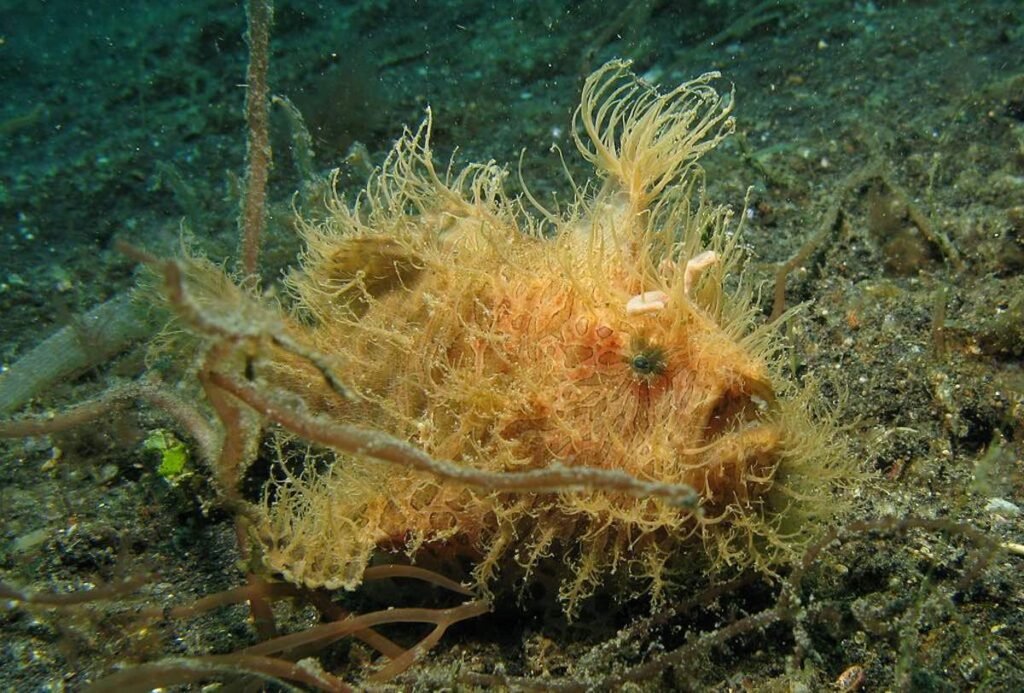
Habitat and Distribution
- Frogfish are primarily located in tropical and subtropical seas, especially in the Indian and Pacific Oceans.
- They flourish in coastal reefs, frequently around coral and rocky substrates, where their disguise is the most successful.
- In consuming cases, they similar can be arrived into a great where they surface-fish in subtropical barbed or dim cools 1 or marine waters units 1 to 200 m(; three, them or three).
- They are solitary fish that spend most of their day resting on the seafloor in shallow, slow-moving waters, camouflaged into their surroundings.
- Frogfish are located in the Great Barrier Reef, the Philippine Islands and most Caribbean locations.
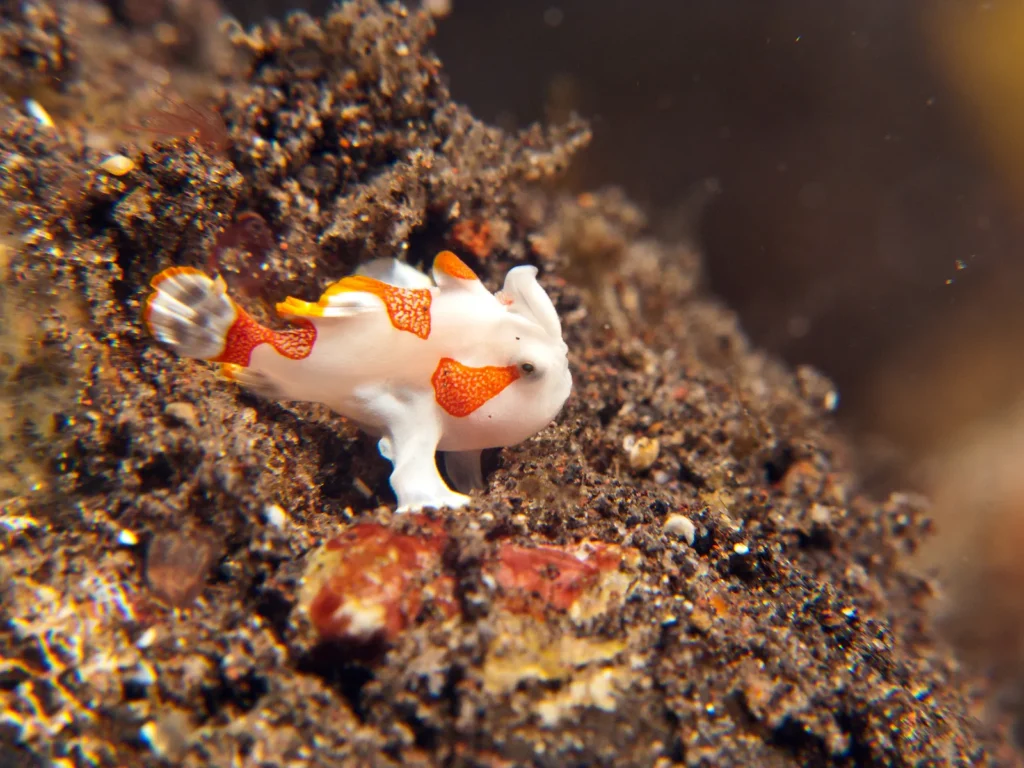
Reproduction and Lifespan
- But frogfish are oviparous; they lay eggs.
- Females usually deposit their eggs in a safe spot, either under rocks or in reef crevices.
- The eggs are fertilized and hatch into larvae, which then drift through the water before settling to the ocean floor and maturing into adult frogfish.
- Typically, these fish can live up to about 5 years in the wild, and this can vary depending on environmental factors and the species.
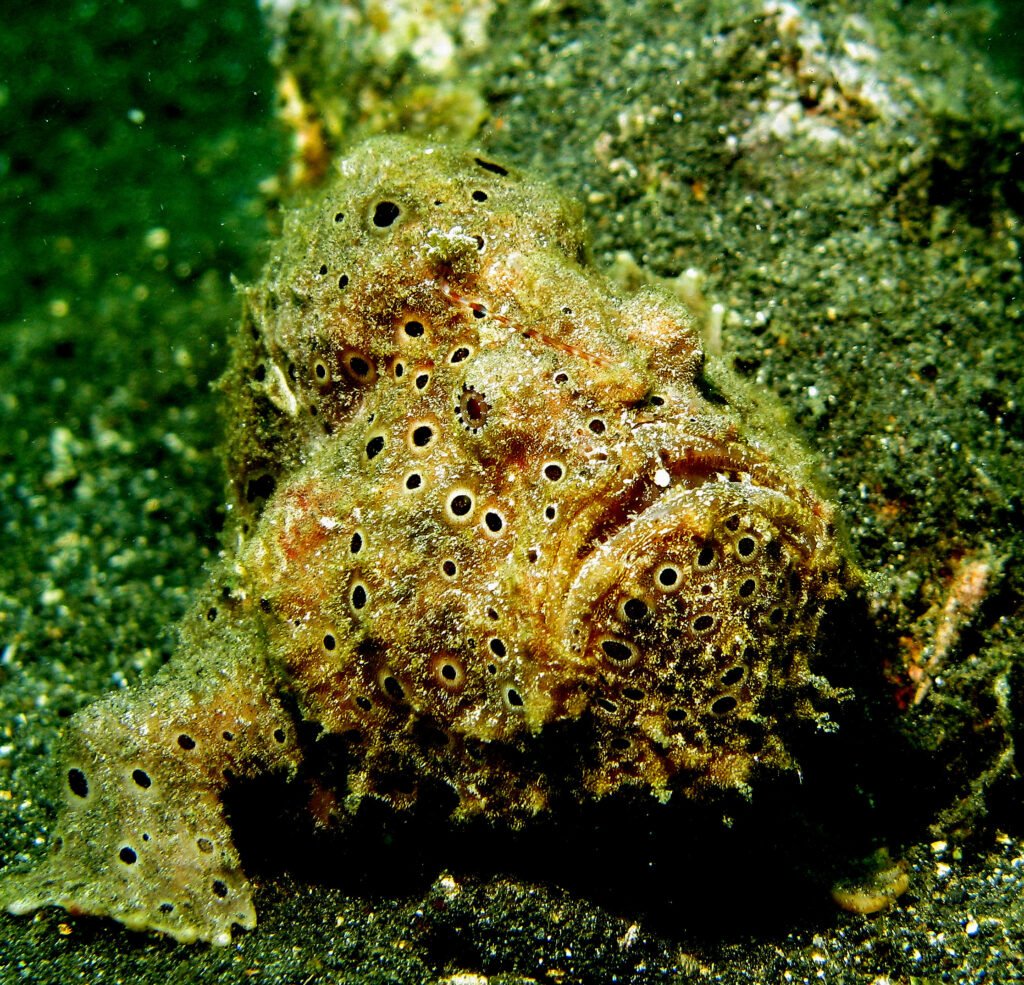
Conservation Status
- Though considered nonendangered in general, many species of the frogfish are threatened due to habitat loss, particularly to coral reefs.
- Their ecosystems face threats from pollution, overfishing, and climate change that could affect frogfish in the future.
- That said, frogfish are unlikely to pose a threat to marine life, and their main defense is their ability to camouflage and avoid predators.
- There are efforts to conserve these delicate reef ecosystems they inhabit.

FAQs:
What is a frogfish?
A variety of anglerfish that is funny-looking and has incredible camouflage. It employs its unique dorsal fin to lure in prey and lives in tropical and subtropical oceans.
How do the frogfish capture their prey?
One of the fascinating facts about frogfish is that they have fishing lures and seduction techniques that small fish and invertebrate find hard to resist.



